Whether you’re taking golf as a hobby or want to go on the game’s hall of fame, you’ll need to know what club to use for chipping.
In case you don’t know, chipping is when you throw a low shot that’ll cause your ball to fly for a short distance then roll on the ground. It’s the type of play that golfers resort to when they don’t need their balls to soar up in the air for a long distance.
And like any other golf play, it isn’t that easy to master. But if you use the right club, your task will be much simpler. That’s where we come in!
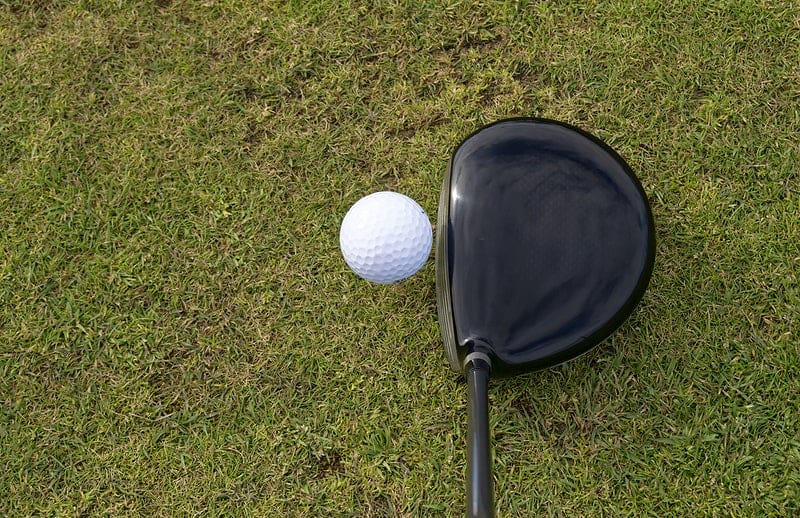
We’ll tell you everything you need to know about what chipping wedges you should use, along with a few tips to help you get going. So without further ado, let’s jump in!
A Bit About Wedges
Wedges are a type of golf club meant for short approach shots, generally around 120 yards away or nearer. However, some golfers also use them for chipping, pitching, and strokes. This is because they make the ball fly through the air and fall sharply.
There are four styles available, each working better for a specific type of play. Most golfers carry three wedges, but you might want to bring more if you use different techniques. Lastly, all wedges are made from iron.
What Wedges Should You Use for Specific Shots?
It’d be best to learn more about the four styles to know which wedge to use for specific shots. So here’s a brief roundup about them.
Pitching Wedge
Pitching wedges fall under two categories, wedges and irons. They’re a favorite for golfers who like their balls to go far as they’re the lowest-lofted type. As a result, they produce high-trajectory shots that go up to 130 yards away. Also, professionals mostly use them with a full swing to send the ball away.
That said, pitching wedges are pretty versatile when it comes to using. For instance, you can use them to make a better lie for your next game or for recovery from the sand. You can almost always find pitching wedges in basic sets of irons.
Sand Wedge
Sand wedges have a specific role cut out for them; they get golf balls out of sand bunkers. For that, they’re open-faced and have exceedingly wide soles. The wide soles give those wedges the ideal amount of bounce needed to push the ball out.
Ideally, you should get a sand wedge if you often play on soft terrains, like soggy grounds. It also works wonders when chipping. But beware that most brands sell this wedge separately; you’ll rarely find it in basic sets.
Lob Wedge
People often refer to lob wedges as lofted wedges. On the contrary to pitching wedges, those are the highest-lofted style out there. In other words, they produce the shortest ball hits, ranging from 60 to 65 yards away. This is why they come in handy in shots that need a high arc. Golfers also commonly use them for runs, pitches, and shots that require minimal ball rolling.
Gap Wedge
As the name refers, the gap wedge creates a loft between that of the sand wedge and the pitching wedge. That’s why it also goes by the name approach wedge. Generally, golfers use it for trajectory shots longer than those of sand wedges and shorter than those of pitching wedges.
Along with the sand wedge, the gap wedge is probably the best type to use for chipping because it breeds consistent results. It’s also often sold separately, but you might find three-club sets that include lob, sand, and gap wedges.
Do My Wedges Need to Match My Irons?
When it comes to this question, there’s more to the answer than it seems. There’s no definite yes or no answer because there are many variables that you should consider. For example, you should consider the lie angle, weight, length, and shaft of your wedges and irons.
Shaft and Weight
It’s the ideal choice to have the same shafts in both your irons and wedges. This will give you better ball flights consistency, less distance loss, and smaller shot dispersion. That said, some professionals prefer softer shafts for wedges because it gives them better control over their shots. But if you’re a beginner, you should stick to our recommendation.
As for weight, you must buy wedges and irons of the same weight. This is because a difference in weight can have the same effect as different shafts.
Length and Lie Angle
As a rule of thumb, beginner golfers should carry wedges as long as their 9-iron, the shortest one in the set. However, if you’re a professional, you can test with different lengths till you reach your perfect match.
As for the lie angle, it should be the same for irons and wedges. This will lead to better consistency in results and ideal distance disruption, which come in handy during short game shots.
What Club to Use for Chipping?
Now, back to your question, most golfers prefer using wedges with angles between 52 and 56 for chipping, and they aren’t wrong. Two wedges fall under that category. The first one is the sand wedge, with a degree ranging from 54 to 56. And the second one is the gap wedge, with a degree ranging from 50 to 52.
Using such wedges will give you better control over the consistency of your chipping results. Also, you’ll get good maneuverability and spin.
Many professionals prefer using pitching wedges or 9-irons for chipping, but it isn’t ideal for golfers at the beginning of their learning journey.
Tips for Excellent Chipping
If you’re a beginner golfer, you’ll need all the help you can get to master the game. Luckily, we’re here to help. Here are five tips for excellent chipping.
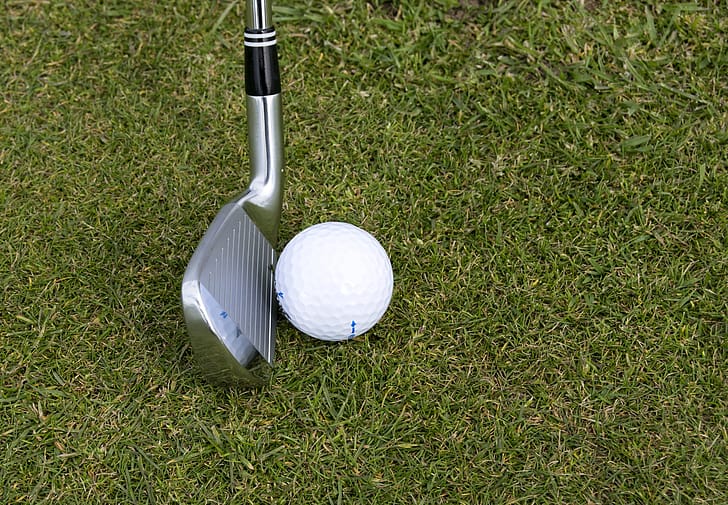
Choose the Right Posture
Choosing the proper posture while playing golf is vital. Ideally, you should bend your hips forward a bit and hang your arms directly under your shoulders. This will give you better control over your swing. That said, you should test yourself to see which bending position makes you more comfortable.
Many people make the famous mistake of squatting too much, which leads to back pain and less consistency.
Wrist Motion
Wrist motion during swinging differs significantly from one golfer to another. Some golfers prefer tensioning their wrists, while some leave them relaxed. The former can affect the way your clubhead hits your ball, while the latter will ensure that your clubhead swiftly falls into the ball.
There’s no right or wrong here; it all depends on personal preference. So ideally, you should practice till you find what makes you more comfortable.
Learn About Interaction Between Ball and Turf
Learning about how your ball will move over the turf is critical when chipping is the topic. We all know how chipping shots send balls in the air for short seconds. To do this, you should understand what makes the ball fly.
To sum it up, your clubhead should hit the ball’s low point. This will trap your ball between the ground and the clubface, which will send it spinning up; therefore, airborne.
Again, learning more about those points will make your strokes better with practice, and you’ll ace your game in no time.
Adjust Your Distance Control
There are many methods by which you can adjust your distance control. But the one we recommend is to master a stroke size, then shift between your clubs. This will give you consistency and control while changing the distance of your hit accurately.
Learn About Chipping Strokes
To master golf, you should study your strokes well. This means that you should know enough about chipping strokes, putting strokes, and more. Regarding chipping strokes, your arms and shoulders should form a triangle that stays intact while swinging.
Another piece of information you should know is that your club should ideally stay below your hip level unless you love huge chipping strokes.
The Secret to Better Score
If you want to improve your chipping score, you can try a few tricks. Here’s a brief roundup about the ones we think matter the most.
Chip With One Club
There’s no denying that mastering chipping with many clubs is limited to professionals. Accordingly, if you’re a beginner who doesn’t have enough time to train extensively, you should use one club for chipping, ideally your gap or sand wedge.
This means that you’ll practice your playing technique more. Not to mention, confidence is critical when it comes to golf. So if you feel like you’ve mastered chipping with a specific club, there’ll be no stopping you from now on.
Hitting Your Putt
Let’s be honest; you probably won’t hole out in your first chipping tries. That’s why you’ll need to finish with a putt. Now, you must decide from where you want to hit your putt. For instance, if the hole you’re aiming for is on a slope, you’ll need to hit your putt uphill.
Of course, practice makes perfect. So you’ll need to train on the right amount of loft you’ll hit with, and eventually, you’ll ace your putt.
Engage Your Hands
Many people practice chipping with putting motions; however, this is not entirely right. To ace chipping, you should include hand movements in your swings. This is mainly because wrist motion provides you with better control and ensures that your club will strike down properly.
Improve Your Results on Chip Shots
If you’ve been having a hard time with how to chip a golf ball for a while now, it’s time to try a new technique. The technique we recommend in this case is the 6-8-10 method.
The six and eight refer to using the 6-iron and the 8-iron. Meanwhile, the ten refers to the pitching wedge.
Now, when chipping, you’re aiming for your ball to be airborne then rolling on the ground at the perfect moment. Unlike pitching, chipping includes flying the ball for the shortest time possible. To achieve this, you’ll need to have ideal control of your swing and use the right club.
Simply put, if you use the 6-iron, your ball will be airborne for a quarter of the distance and roll for the rest. As for the 8-iron, it’ll go up for only ⅓ the distance. Finally, the pitching wedge has a half and half ratio.
But to be clear, those numbers only apply if you’re chipping on a flat green ground. If you’re playing on a slope, you’ll need to make some changes to your choice of clubs. So here’s a table to help you understand better.
| Club | Downhill | Uphill |
| Pitching wedge | Lob wedge | 8-iron |
| 8-iron | Pitching wedge | 6-iron |
| 6-iron | 8-iron | 4-iron |
You might have noticed there’s a pattern here. You’ll use a lower-lofting club than the one you have if you’re chipping uphill. As for downhill chipping, you’ll use a higher-lofting club.
Best Wedges for Chipping
In this section, we’ll tell you all about the best wedges for chipping on the market today. So if you’re yet to buy yours, read on!
1. Cleveland CBX 2 Gap Wedges
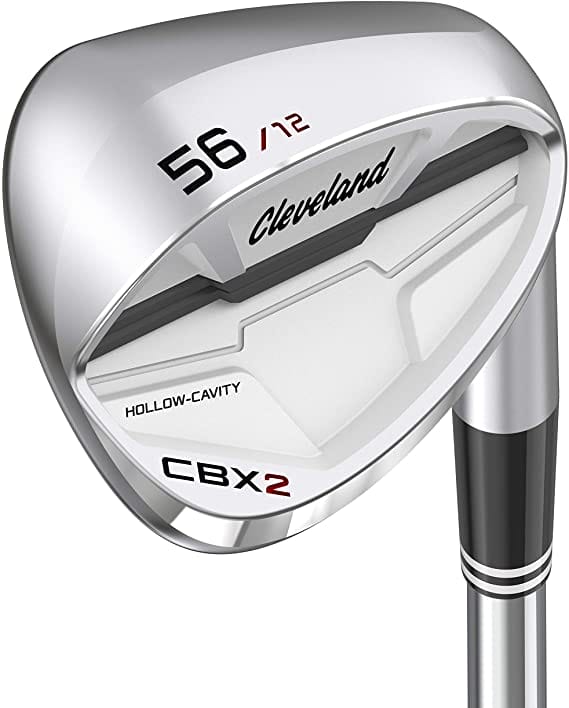
If you don’t mind denting your wallet a bit to get a top-notch wedge for chipping, look no further than the Cleveland CBX gap wedges. And if you like them, you can complete your collection and get lob, pitching, and sand wedges.
For starters, they feature a hollow cavity design with the toe weighing more than the heel. This guarantees gentle impacts and fewer mistakes. More so, they come with three dynamic sole grinds, which give you maximum versatility to attempt any play you want.
If you appreciate feeling the impact of the ball and the wedge in your hands, you’ll love the Enhanced Feel Balancing technology that comes with those wedges. And for minimum vibration, there’s a Gelback TPU Insert.
The low-lofted wedges also feature a Rotex Face technology that gives you an ideal spin along with perfect swing control. Overall, the Cleveland CBX wedges are a solid choice for beginners.
2. Cleveland Smart Sole 3
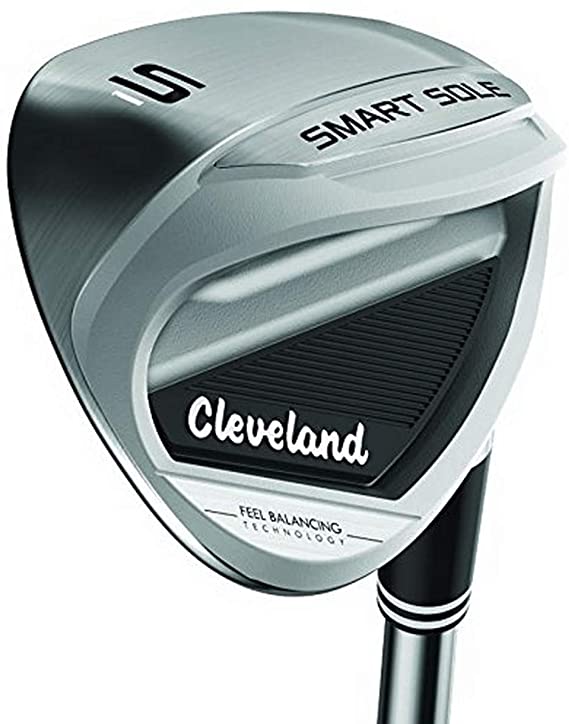
The feature-packed Cleveland Smart Sole 3 is an excellent choice for short game lovers. It features a perfect weight redistribution between the toe and the hosel, which guarantees less shot dispersion. As a result, your swings will be more accurate than before.
You also won’t make as many mistakes as before with this wedge since it comes with activation pads. Those pads make for flawless interaction between your golf ball and the turf.
As the wedge’s name refers, it has a three-tiered sole that’ll get your ball out of any bunker it falls into, especially if you’re using 58 degrees of loft.
Finally, for golfer women, there’s a Cleveland Smart Sole 3 made explicitly for them.
3. Taylormade’s Hi-Toe Raw Wedge
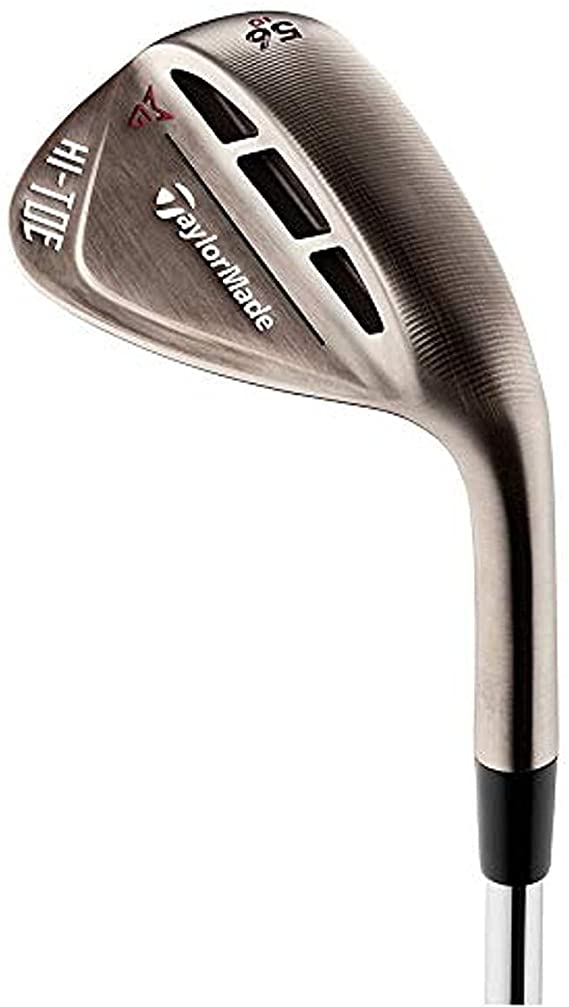
The Taylormade’s Hi-Toe Raw wedge takes a proud stance among other wedges for its high spin, elegant design, and Raw Face technology.
The Raw Face technology gives you more spin with each throw and a more vivid feel on the impact. Another aspect that adds to the ball’s spin is the unique Hi-Toe design that can create a higher gravity center. It can also give you better control over your swings.
The wedge’s face has narrow grooves that contribute to its precision. They also guarantee you accurate shots on wet grounds. Moreover, those grooves rust as time passes, giving the wedge an authentic, vintage look that many golfers appreciate.
If your ball falls in a bunker, rest assured that you can push it out using your Taylormade’s wedge. It has a large face and a lofting range between 56 and 62.
It’s worth mentioning that this wedge is a favorite for professionals. Jon Rahm, Collin Morikawa, and Dustin Johnson famously used it on different occasions.
You have two bounce options to try out if you purchase this wedge. The first one is the standard bounce, and it ranges between 9° and 10° and provides you with maximum versatility. The other one is the low bounce, which works wonders for shallow swings and playing on greens.
4. Callaway Big Bertha Pitching Wedge
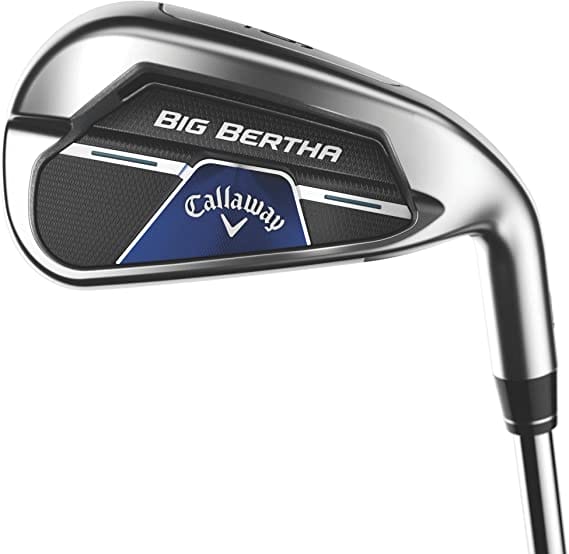
The Callaway Big Bertha pitching wedge is a luxurious choice that’s more fit for professional golfers. It features a 360 Face Cup that gives you maximum ball speed and a high spin. More so, it has exceedingly wide soles that improve the interaction between your ball and the turf.
The best part about this wedge is that it’ll keep your ball straight in the air when chipping and give you an easier throw. This is because the manufacturers perfectly balanced its head.
What also contributes to the easiness of your launch is the custom tungsten content that adorns this wedge. More so, it guarantees you precision and high speed with each swing.
Suppose you like to feel the impact of your wedge on the ball but don’t appreciate the vibrations. Then, you’ll love the urethane microspheres that the manufacturers added to this wedge. They ensure a minimum amount of vibrations while giving you the pleasing feel you want.
Finally, the Callaway pitching wedge offers forgiveness with each impact.
Fun Fact: Jon Rahm, who’s deemed the best golf player in the world right now, has three Callaway wedges in his bag.
Frequently Asked Questions
Which Wedge Is Easiest To Use For Chipping?
In general, the most manageable wedges to use for chipping are the sand wedge and the gap wedge. This is because you can swing them softly; therefore, your chances of making a mistake will decrease drastically. As for swinging hard, it carries a considerable error margin.
What Wedge Degrees Do Professionals Use?
The most common degree of loft that professionals use is 46, with 48 being a close second. However, those numbers are limited to pitching wedges. When professionals use gap wedges, they go with the 52 and 50-degree loft.
When Should I Buy New Wedges?
Ideally, you should upgrade your wedges after about 70 to 75 rounds. This is when they begin to perform less efficiently, affecting your score. This time might come anywhere between one and a half years and two years. After all, it depends on how often you play golf.
Is Pitching Or Chipping Better?
It depends on where you stand in your game. If your ball is in a challenging situation, like in a bunker, for example, and you want to carry it out, then pitching is your better option. On the other hand, if your ball is close to the green and doesn’t need to be in the air for long, then you can go with chipping to let it roll gently towards the hole.
What Bounce Should I Use For Chipping?
The answer depends on the conditions of the ground you’re using to play. For instance, if you’re playing on the firm green turf, then you should go with a low-bounce wedge so that it can dig in the ground a little. But if you’re playing on soft ground, you’ll do better with a high-bounce wedge to avoid digging your club because of soggy conditions.
Conclusion
Mastering chipping in golf isn’t an easy task. It requires patience, knowledge, and the right tools. Luckily, we’ve got your back regarding the tools.
If you’re a professional golfer and want a feature-packed, luxurious wedge that’ll give you high ball speed and spin, you can go for the Callaway Big Bertha pitching wedge.
On the other hand, if you’re a beginner, you’ll do better with the Cleveland CBX gap wedges. They’ll provide you with ideal spin and swinging accuracy. However, they might break your bank a bit.
Now that you know what wedges to use, the secret to a better score, and the methods you can try for chipping, you’ll ace your game in no time.

